What magnifying systems do you need for painting detail? To paint details on miniatures, you need good fine-motor skill and eye sight. Magnification aids in particular, e.g., visors, headsets, or reading glasses, can improve detailed painting. Fine scale modelers and other hobbyists can always tools to help make tasks easier and more comfortable.
Have you ever tried to decouple an N-scale model train in poor light, or check the integrity of an airbrush nozzle without optical help? I use a visor when I’m painting miniature faces, eyes, or free handing details. Wearable “magnifying glasses” are everywhere because they work!
When I’ve shown my work to others, and when they look close, I often get asked, “do you use a magnifying glass, or something–“
My answer is “sorta”.
The top 3 recommended magnifying visor headbands for painting miniatures are:
As you read on below, you’ll see why I choose these three headband visors. They provide ready-to-use optical help for those of us who want to work with fine detail and small parts.
The magnification aid I use for painting miniatures and highly-recommend
Why this magnifier? The best reason to choose a particular type of magnifier is comfort.
Comfort is the first and best reason why you should choose a particular visor system. You’re going to be painting for hours. Do it in comfort.
The other advantages of the Optivisor Headband is the ability to switch out the glass lens inserts for different magnification power (1.5 to 3.75x). This makes the visor incredibly versatile and can adapt to your personal needs and tastes for painting miniatures.
MORE: MAGNIFYING LIGHTS FOR MINIATURE PAINTING (TIPS AND RECOMMENDATIONS)
You can even adjust the headband part for your specific head-shape and size. Because it is an open air design, you won’t sweat or overheat from wearing it for long-periods of time. I’ve personally worn one of these headbands comfortably for more than 3 hours (for a big painting commission job).
Notably, the front lens part flips up when you don’t need to use magnification. This allows you to keep going with your task without removing the visor. This is very convenient. Finally, I am able to wear my normal glasses while using this visor. I can jump between normal vision and magnified vision with a flick of the wrist.
The following would be my choice if I wanted a cheaper option, with more bells and whistles:
The extra light isn’t necessary. You’ll have your desk lamp. This visor comes with lenses of different optical power. But, in contrast to the Optivisor (above) that uses glass lenses, this visor uses plastic lenses. Plastic lenses are cheaper, but don’t have the optical clarity of glass, and are more difficult to clean. Nonetheless, aside from more visual options, e.g., more lenses, a light, and a loupe, this visor has the same function as the Optivisor.
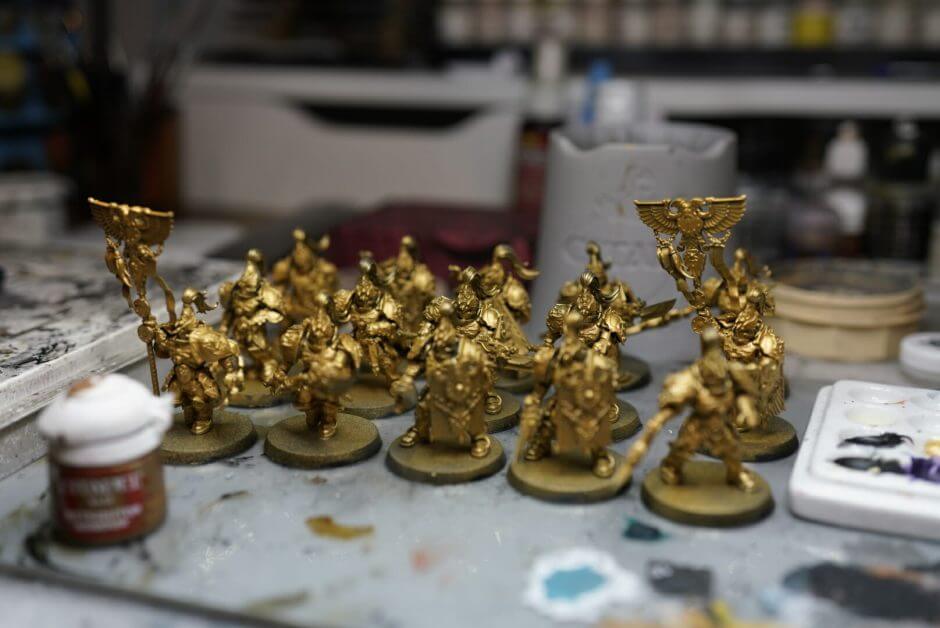
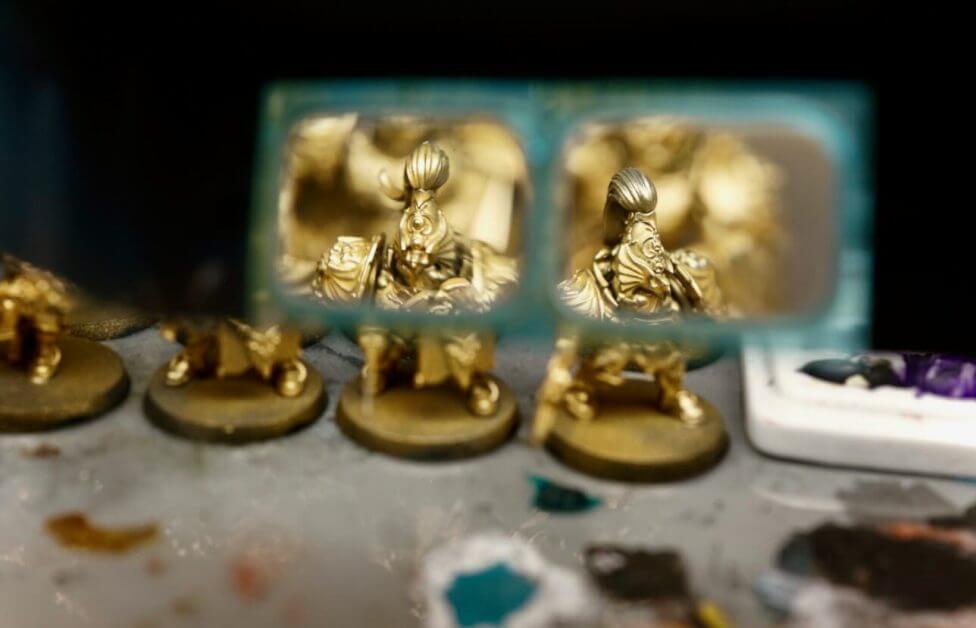
What is the best magnification power for painting minis?
I recommend 2.75x as the default magnification power.
Why?
At 2.75x magnification power you have sufficient improvement in seeing detail while also balancing out the drawbacks of too much or too little power.
In general, magnification power between 1.5 to 3.75x is sufficient for improving the ease of painting details on miniatures. Too much magnification and you lose depth-of-field (see article on how depth of field affects photographing miniatures), which can make painting more difficult. Too little magnification and you might as well not use any vision aids.
Why is focal length important?
Focal length of a magnifying visor is the distance between the lens and the magnified object. Focal length determines how much space you have between your miniature and your face. If your focal length is too short, then your brush will bump into your visor.

Generally, a visor/lens with a shorter focal length has greater optical power (also measured as diopter) than one with a long focal length; that is, it bends the light rays more sharply, bringing them to a focus in a shorter distance.
At 2.75x magnification, the focal length is 6 inches, which is for me is the perfect distance to hold a miniature while I’m painting it for detail.
If you wanted more distance between yourself and the miniature, you would need to decrease the magnification power, e.g., 2x magnification has a focal length of 10 inches (you can buy this lens plate for the optivisor).
At the end of the day, what magnification strength and focal length you choose is personal. Get what is comfortable and useful for your needs.
3 Recommended Best Magnifying Visor Headbands for Miniatures or Scale Models
1. Donegan OptiVISOR Headband Magnifier

from: Blick Art Materials
This is the most popular headband. I see people using this one often in many aspects of modeling and miniature hobby work.
The best aspect of these pair of visor headbands is the use of real glass lenses. Actual glass in the lens make these the optically best quality pair of visors you can buy (within a reasonable price).
Glass is easy to clean, and resists scratching and damage. More importantly, glass has the highest light transmission index of lens materials. This means a bright, clear magnified image of your working subject.
Also, because of the quality of these lenses, you don’t get the color tint or casts that distort your view. Accurate color representation is important for artists!
There is a reason I’ve used these OptiVISORS for years. I actually own two pairs; one with a 2.75x lens attached, and the other with a 5x lens.
Other notable features:
- Glass prismatic lens for improved focus and reduced eye strain
- Headband size-adjustment knob for custom fit
- Visor tilts out of way when not needed
- Long focal length for an excellent working distance
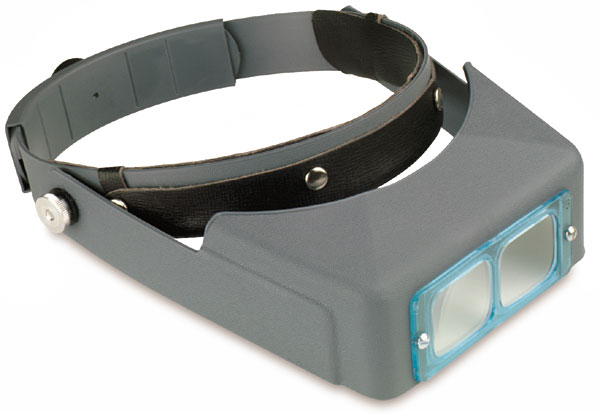 | Optivisor – sale! Optivisor can be worn over glasses and tilts. Magnifying power and helps protect against chemicals, grease, and flames. An optical glass lens is mounted in a plastic frame. Adjustable head band. Variety of magnification levels and focal lengths available. |
2. Headband Magnifying Glass with Light

As mentioned above, I recommend this pair for those of you looking for more versatility. This headband is also less expensive (it uses plastic lenses instead of glass).
The built-in LED lights help light up your subject. The lens are easily flipped up or down depending on your need. For light duty hobby work with miniatures or other scale models, these might be all you need.
They may not suit the user who works for long duration. The lower optical clarity may contribute to eye fatigue and strain that could end up slowing you down.
Again, at the end of the day, comfort and your preference for how you work will determine what works best for you.
Other notable features:
- Versatile: All lens on the headlamp can be folded when not needed, therefore you can use any single lens or any combination from the three (1 fixed lens, and 2 replaceable lens on the dual slots)
- 3 LED Lights
- Adjustable headband
3. SE Illuminated Dual Lens Flip-In Head Magnifier

This is the cheapest option you can get. Although it works and looks like the OptiVISOR, this headband uses plastic lenses (listed as acrylic).
The LED light is not very bright, but could come in handy in some situations. I put this on the list because at this price of ($10) it is great for the casual painter or hobbyist who only needs to do a few small tasks at a time.
I would not recommend this lens for long-term use for painting models and miniatures. But, if you just need that one-off use to perform that just a tad too small task, this is for you.
Having some kind of magnification aid should be in every miniature hobbyist’s toolbox. Sooner or later, you’ll wish you could see just that much more detail.
Other notable features:
- LED light
- 3 plastic lenses (included)
- A 4.5x loupe to increase magnification even further
If you don’t want to “wear” magnification, then use a magnifying lamp.
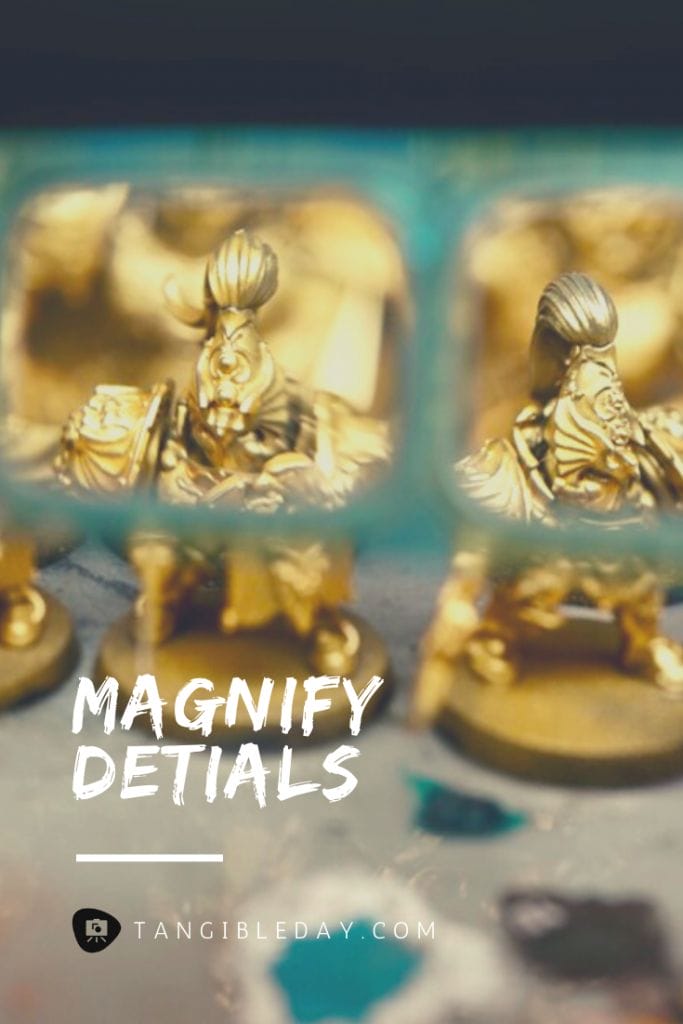
Final Word
If you’re looking for the best magnification you can buy, the OptiVISOR is the best value. Yes, it is pricier, but for professional level work you’ll be glad to have it with you.
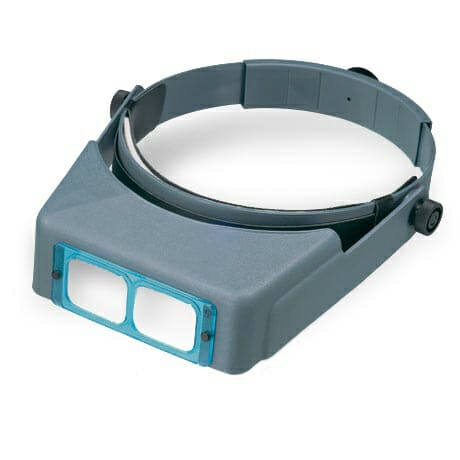
Glass lenses are a big deal. For light duty hobby tasks, the optical quality of the other options are perfectly fine. You’ll have the magnification power to see whatever details you’re working on.
Thanks for reading and happy painting!



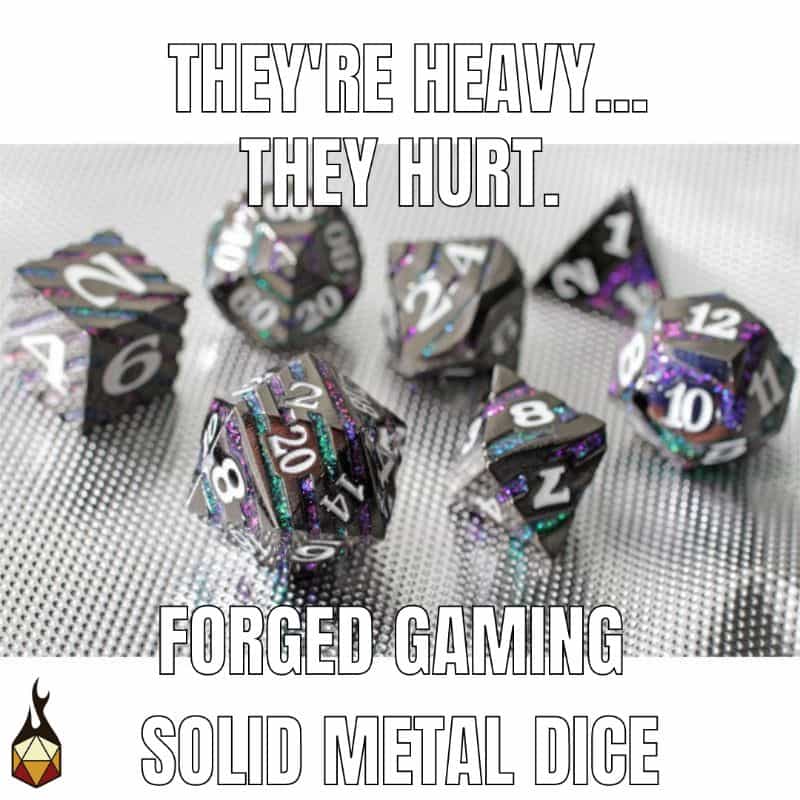

Tangible Day on YouTube (Miniatures and More!)


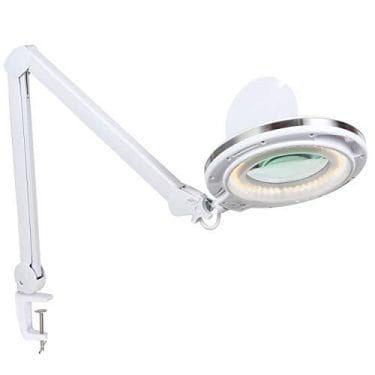
I use either reading glasses at 3.0 magnification (I have various strengths from 2.0 up to 3.75) I also have a magnifying headband with clip in lenses (and lights) from 1.0 to 4.0 magnification. You can add two lenses. So magnification up to 6.0 which is way to strong. To be honest I prefer the glasses as they are lighter and I can look over the top to watch TV or underneath to find my paint.
Yep, definitely second the reading glasses. Cheap, easy to store, and comfortable. I think the main one I use is a 1.75 or 2x, and I switch to a 3x pair when doing minute details.
I first got a headband similar to the white one, but it put all the weight on the bridge of my nose. I found that super uncomfortable.
Comfort is way more important than anything else I think, aside from clarity of the lenses
But, I wear glasses….and so hence, the visor. But, the synergy of adding additional lenses hasn’t been something I noticed. I’m going to check it out. Yeah, 6x seems a bit too much for miniature work.
I wear glasses and have two pair, regular for when I drive or ride my bike and reading prescription glasses. I need a third prescription for computer, but that’s going to be a while.
Sounds like somebody needs to come up with one of those visors with several different strengths where you can flip between the strengths as you need a different one.
I found one designed for dental surgery. It’s on amazon but costs $350+ dollars!
I figured there were some expensive options out there for this, but I would like to see somebody do a crowdfunding option for a good pair that didn’t cost anywhere near that much. Although some of the crowdfunding items I see for different things cost way more than they should.
Thanks heaps for this review. I recently bought a pair of magnifying glasses, and as you reference, the magnifications are far too high (x10 – x50) – great for removing spinters, but basically face-worn microscopes.
The other problem with the ones I got is that there is no zone of binocular vision, so depth perception is completely removed. Before I go rushing out to buy one of the sets you recommend, I wanted to ask how they are for seeing with both eyes at once to maintain that depth-of view?
The three sets I recommend all have great depth of field and ideal focal length. The Optivisor (glass lens) is the one I use. The glass is clear, bright and easy to clean if it’s get dusty.
Pingback: Ten reasons why you should hire a Tabletop Wargamer about nerds